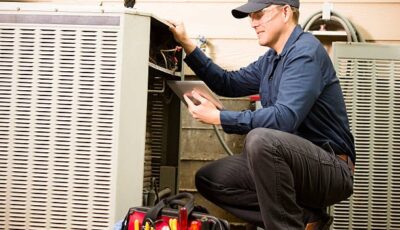
A well-functioning drainage system is critical to the stability of your home’s structure and the health of your landscape. Regular maintenance is key to ensuring that your drainage system works effectively. It can be challenging to pinpoint the perfect time for maintenance, but there are certain periods and signs that indicate it’s necessary. Knowing when to schedule these services will save you from potential headaches and costly repairs.
Seasonal Considerations for Drainage Maintenance
As seasons change, so do the demands on your drainage system. Each season brings its own set of challenges that can affect how your system operates.
Spring and Fall Cleanings
Spring and autumn are prime times for drainage maintenance. Here’s why:
-
The spring thaw can introduce more water into the system, highlighting any blockages or poor drainage.
-
Fall leaves, branches, and debris can clog drains and need to be cleared before winter arrives.
Before Heavy Rainfall
If forecasts predict heavy rainfall, it’s wise to inspect and clean your system beforehand. This ensures water can flow freely and reduces the risk of flooding.
Signs You Need Immediate Maintenance
Sometimes, drainage systems send clear signals that they require attention. Ignoring these signs can lead to more severe issues.
-
Water pooling in your yard or near your foundation could indicate a blockage or broken drain pipe.
-
Foul odors emanating from drains are a sign that waste is accumulating and not properly flowing out.
Addressing these issues promptly can prevent damage to your property and maintain a healthy environment.
Annual Check-Ups
Even if no signs of problems are evident, an annual check-up is beneficial. It’s a preventative measure to catch and repair small issues before they escalate.
Professional Assessments
A professional can gauge the health of your system and provide tailored recommendations. This peace of mind is invaluable.
Custom Solutions
Some homes might require unique solutions. Homeowners seeking a site drainage solution in Manchester, NH, for example, may need specific adaptations to handle their particular climate and terrain challenges. It’s essential to collaborate with professionals who can design a system tailored to specific needs.
When New Landscaping is Planted
New landscaping can significantly affect your current drainage setup. Plants, trees, and new terrain shapes can alter water flow. It’s best to schedule an assessment after any major landscape changes.
Maintaining Drainage Systems in Urban Environments
Urban residents should especially be vigilant. Paved surfaces in cities can lead to quicker runoff, putting more strain on drainage systems. Regular maintenance is critical under these conditions.
Your local environment plays a massive role in the health of your drainage system. For instance, being aware of their location can inform decisions about maintenance frequency and needed preventive measures. Distinct local conditions, like soil type and terrain slope, can influence how your system behaves.
After Severe Weather
Severe weather can have a big impact on your home’s drainage system. It’s important to be aware of how these weather events can cause issues. After a severe weather event, it’s essential to check your drains and ensure everything is working well.
After Severe Weather
Severe weather events, like storms or heavy snowfall, can cause serious damage to your drainage system.
-
Strong winds and heavy rain can lead to debris getting stuck in your drains.
-
Melting snow can also cause water to accumulate, potentially overwhelming your drainage system.
Once the bad weather is over, it is crucial to inspect your drainage system. Look for any signs of damage or blockage that might need immediate attention. Ignoring these issues after severe weather can lead to bigger problems down the line.
Inspecting and Resolving Damages
After the weather clears, take the time to thoroughly inspect your drains.
-
Check for any blockages caused by leaves, sticks, or other debris.
-
Look for cracks or leaks in the drainage pipes.
Resolving any damages quickly is important. This action can help prevent further issues in the future. If you see anything concerning or are unsure about the inspection, consider calling a professional. They can provide assistance to ensure your drainage system is in good condition and ready to handle future weather events.
Additional Protective Measures
Taking additional protective measures can further secure the longevity of your drainage system. Solutions like a leaf guard service can be a proactive step to keep drains free of obstructions. Implementing this service, particularly before fall, can be a wise decision.
Maintenance Before Selling Your Home
If you’re preparing to sell your home, ensure your drainage system is in top condition. It can be a highlight for potential homebuyers who value well-maintained homes.
Final Thoughts
Routine maintenance of your drainage system is not only about preventing disasters but also about prolonging the life of your system. By scheduling regular maintenance and responding quickly to any telltale signs of issues, you help ensure your property remains dry and damage-free. Adequate upkeep also helps in maintaining your property’s value and providing a safe environment for your family. So mark your calendars, stay attentive to your system’s performance, and never hesitate to seek professional guidance when in doubt.






